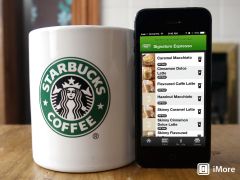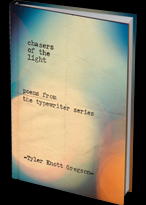![]()
![]()
![]()
Use LEFT and RIGHT arrow keys to navigate between flashcards;
Use UP and DOWN arrow keys to flip the card;
H to show hint;
A reads text to speech;
59 Cards in this Set
- Front
- Back
|
What are some of the world's largest retailers? |
1. Walmart 2. Carefour 3. Tesco 4. Metro 5. Kroger ... |
|
|
What are some of the fastest growing retailers in 2014? |
1. Amazon 2. Sherwin Williams 3. Chik-fil-A 4. Family Dollar 5. Apple 6. Tractor Supply Co. 7. Whole Foods 8. ATT Wireless 9. Signet Jewlers 10. Starbucks |
|
|
Forbe's most innovative retailers: |
Hermes Chipotle Amazon Priceline Netflix H&M Whole Foods Inditex Fast Retailer Walmex Luxottica |
|
|
What is the biggest challenge for retailers today? |
Omnichannel - being able to compete with sole online retailers like Amazon, Zappos, Warby Parker, and having their ordering seamless via mobile, website, and in-store |
|
|
What is meant when discussing fragmented/shared market for companies like Uber and Airbnb? |
Saturated market with many other companies competing in the same space. |
|
|
Which company is currently leading the digital space in retailing? |

|
|
|
What must companies like Macy's and Walmart embrace going forward? |
Omnichannel, offer similar services to what Amazon is doing (day-of delivery) |
|
|
What are the trends in retailing: now and in the future? |
Digital/Mobile - need for shopping and ordering to work seamlessly Globalization/Local - people are interested in knowing where their food is coming from and supporting local, smaller scale markets Fresh/Organic - same thing Fair Trade - Fair wages for making products Fast Fashion - H&M and Forever 21 Multi/Omni Channel - store's presence everywhere digital and physically Fragmented/Sharing - Many services share highly competing space, Airbnb and Uber Technology - Apple Pay, Social Integration |
|
|
What is geofencing? What about beacons? |
Walking past a store and receiving push notifications and offers. Beacons are when you sit in a store and you get notifications when you pass a certain section. |
|
|
______% prefer to buy from retailers with a strong CSR focus |
90% |
|
|
What are some characteristics of retailers? |
Breadth - variety (golf, soccer, hockey) Depth - assortment (golf bags, golf tees, apparel) Services offered Prices (cost of offering breath and depth of merchandise and services) |
|
|
Types of Retailers |
Food General Merchandise Service |
|
|
What are some types of food retailers? |
Supermarket Supercenter Conveinence Warehouse Club
|
|
|
What are some types of general merchandise? |
Full-line discount Category specialist Drug Specialty Department Off-price Extreme value |
|
|
What are some types of service? |
Audio Rental Health Spa Vision Center Bank |
|
|
What are outlet stores used for? (Great Lakes Crossing, Tanger Outlets) |
Usually a far distance from actual store. Outlet stores are actually starting to be placed very near main locations because we learn that there is no price sensitivity here - people who shop at Nordstrom's will not shop at Nordstrom Rack. However, people who shop at Nordstrom Rack may eventually shop at Nordstrom later (what this is doing is building brand loyalty) |
|
|
Department stores in a eroding marketing - what is happening?
|
They are increasing exclusive merchandise Increasing private-label merchandise Expanding multi-channel and social media presence |
|
|
What kinds of strategies is Walmart currently deploying in urban areas? (Target, Walmart, Full-line Discount stores) |
Wal-Mart is now coming to neighborhoods by offering supercent - also offering smaller stores - Millenials like the one-stop shop concept and having to only buy groceries for a week or so and Wal-Mart is trying to accomodate this |
|
|
What is the issues with speciality stores like Office Max, Home Depot, and Lowe's (Category specialist stores) |
They have no emotional connection, not like what is offered at IKEA or Coach or Burberry Also, they have intense intercompetition with one another |
|
|
What qualities do specialty stores like A&F, Sephora, Radioshack have? |
Very narrow, niche offerings. Sales associates are informed. Among the most profitable and fasting growing firms in the world (until they're not, fads)
Apple, A&F, etc. |
|
|
Discount stores such as Dollar General and Family Dollar |
Low income market Small packages sizes More private label for impulse buys Adding food services Aquiring one another Adding food services Fast growing |
|
|
Off-Price retailers examples |
Outlet stores Ebay Closeouts and irregulars such as TJ Max and Marshalls Flash sites such as Gilt |
|
|
What type of affect do the new trend towards indie, small, mom and pop shops |
Independent coffee shops competing with Starbucks, Biggby and other big retailers Micro-brews Farmers/Artisan markets DIY for entrepeneurs - Etsy Trends to keep it local |
|
|
Types of retailers for food |
Supermarket - 2-30k skus Walmart - food and discount Convenience stores - speedy and pricey Farmer's markets Costco - warehouse club Plum market
|
|
|
Supermarket retailing |
Example talked about in class is Whole Foods - leading the way for making it a good experience for customers. Introducing bar to engage, have people stay in store longer |
|
|
Services offered for retailers |
Retailers differ on services: Wheelworks assists in setting up bikes for customers Wal-mart is very much a self-serve store, hardly any help
|
|
|
A lot of service retailers are what? |
Franchises: Biggby, Delta, Fitness Inc., Jiffy Lube |
|
|
What are service retailers important? |
Aging population Health and fitness Two-income families Fragmented economy More likely to pay people to do things for them rather than setting it up themselves |
|
|
Franchising - why is it attractive to people? |
30-40% of US retail sales Most start-up retailers are around less than 5 years - they simply just don't make it Franchising you get a brand name, corporate advertising, uniformity Capital: lots of money to expand into new location, franchisee needs to put that mone up themselves, more cost efficient |
|
|
What are utilitarian needs that retailers need to satisfy? |
Convenience, price, and ease of use
|
|
|
What are sources of information that customers use? |
Internal - what they are thinking about External - searches they make |
|
|
What are the three buckets of decision making? |
Cognitive - some you have to think about (picking a clean car rather than a dirty one) Habitual - based on a person's habits Affective - emotional connection |
|
|
Habitual buying |
Believing that something to be true because it is always that way - Buying a swiss army knife because you know that swiss makes popular army knives Belgian waffles |
|
|
Evaluation of alternatives |
Customers evaluate based on attributes - price, quality, ambiance, etc.
|
|
|
What is a multiattribute model? |
Multiattribute model of customer decision making based onthe notion that customers see a retailer or a product as a collection of attributes/characteristics |
|
|
Can a market shift under a company? |
yes, that's what happened to A&F. |
|
|
Getting to the consideration set |
It's difficult for customers to express more than 3-4 retailers for a particular product or industry. It's the job for a company to ensure its in that consideration set.
Advertising, promotions, etc. That might have to even change their attributes to get there. |
|
|
Showrooming - what can retailers do to fix this? |
Informed sales associates Provide services Good assortments Credit Everyday low prices Improved navigation Robust social media Exclusivity/private label |
|
|
Purchase merchandising - how can retailers convert shopping > purchase |
Easy to buy Mobile friendly Check out lanes Positive reinforcement Return policies Scarcity/urgency |
|
|
Post-purchase evaluation |
Affects future store/product decisions builds store and brand loyalty converts to future purhases |
|
|
Types of buying decisions |
Extended problem solving - high financial and social risk need lots of information/sales representatives Limited problem solving - some prior buying experience. shopped with them before, might have had a positive experience, satisfied, loyal Habitual decision making - store brand and loyalty
|
|
|
How retailers can affect extended problem solving |
provide lots of information Reduce risks - offer guarentees/return priveleges
|
|
|
What can they do for people with limited problem solving |
These are people that have shopped prior to coming again Need to make sure customer is satisfied, provide good service, assortments, value, offer rewards such as loyalty programs - increase impulse buying |
|
|
What do retailers need to do for customers in habitual decision making |
make sure that the merchandise they need to make habitual purchases, provide good customer service, offer rewards, reinforce brand image - |
|
|
what can retailers do to increase impulse buying |
influence by using POP/POS technology, suggest add-ons, complementary merchandise, use signage on the aisle, put merchandise where buyers are waiting, wow factor |
|
|
Social factors that influence the buying decision process |
people tend to stay with reference groups and group norms to fit in - purchase decisions based on that. (family, reference group, culture) |
|
|
What is called a retail market segment? |
A group of customers who are attracted to the same retail mix because they have similar needs. |
|
|
Criteria for evaluating market sections: |
Actionable - retailer should know what to do to satisfy needs for the customers are in the segment
Identifiable - Retailer is able to determine which customers are in the segment (location, product, time) |
|
|
Crtieria for Evaluating Market Segments |
Substanial - market segment must be larger enough or buying power signficiat to generat sufficient profits
Reachable - Retailer can target promotions and other elements of the retail mix to customers in the segment -no point in segmenting it unless its large enough to provide profit without canabilizing other groups |
|
|
Hedonic needs that retailers satisfy |
Stimulation (flagship stores) power (makes you feel good) and status, adventure (black friday) |
|
|
Retailer examples of different segmentation techniques: |
Geographic: Targeting students in the Dearborn area to and surrounding Southeast Michigan regions to attend U of M D Geo-demographic: Bloomfield hills Demographic: Targeting 16-17 year olds with college application Buying situations: Apple release, Harry Potter book release Lifestyles: Golfers |
|
|
Omniretailing |
Retailers sells merchandise or service through more than one channel - uses a combination of channels, each providing a unique benefit |
|
|
Retail sales by channel |
90% stores 5% internet 3% catalogue 2% other Mobile .5% |
|
|
How do retailers use multiple channels to interact with customers |
store, kiosk, catalog, call center, web/e-mail, mobile |
|
|
Why are store based retailers evolving to multichannel retailers |
Electronic channel growing at 20% per year Multichannel retailer can attract more customers and satisfy existing customers better Growth in sales in stores is declining |
|
|
Mobile Internet Shopping |
Mobile Portable Location sensative Push notifications Touchscreens Smaller screen size Apps |
|
|
Challenges of effective multichannel retailing |
Centralized vs. decentralized Multichannel supply chain and information sytems - distributi streategies for stores , catalog, and internet channels
|
|
|
Integrated shopping experience |
Communicate with customers anytime, anywhere through multiple channels, website, stores, kiosks, hand held devices, Integrating legacy systems, seamless interface, merchandise assosrtment, pricing strategies, |
|

|

|

